
PROS
- Superb navigation and coverage
- Excellent carpet cleaning
- Superb on hard floors
- Effective, easy-to-clean brush bar
- Remote and networked control
CONS
- Average edge cleaning on carpets
- Small bin, frequent emptying
- Taller and wider than the competition
KEY FEATURES
- 250W Max power consumption
- Cleaning time 30/60/90mins
- Noise level: 78 dBA
- Recharge time: 240mins
- Camera-based room tracking
- Manufacturer: Samsung
- Review Price: £799.00
WHAT IS THE SAMSUNG POWERBOT VR9300?
Bringing “high tech” to automated vacuum cleaning, the VR9300 Powerbot is Samsung’s latest robot vacuum cleaner. It promises the world’s most powerful suction from a robot cleaner – though we imagine Dyson might argue the point – full sensor and visual room mapping, and easy to empty, bagless operation.
The VR9300 can be programmed to clean while you’re out, or you can set it to whizz around using the supplied remote control. It’s wirelessly networked too, which lets you select the areas you want cleaned from your smartphone.
With better mapping, manoeuvring and cleaning power than the Samsung Powerbot VR9000 we tested a year ago, the new Samsung Powerbot gives the Dyson 360 Eye a serious run for its money.
SAMSUNG POWERBOT VR9300 – DESIGN AND SETUP
While the previous VR9000 Powerbot was on the chunky side and a little bling with its rose-gold trim. The new VR9300 is still massive (378mm at its widest and 135mm thick) but it has had a serious makeover for the better. It’s mean and moody-looking with an all-black finish and a purposeful gait that could scare small children. This is a robot cleaner that means business.
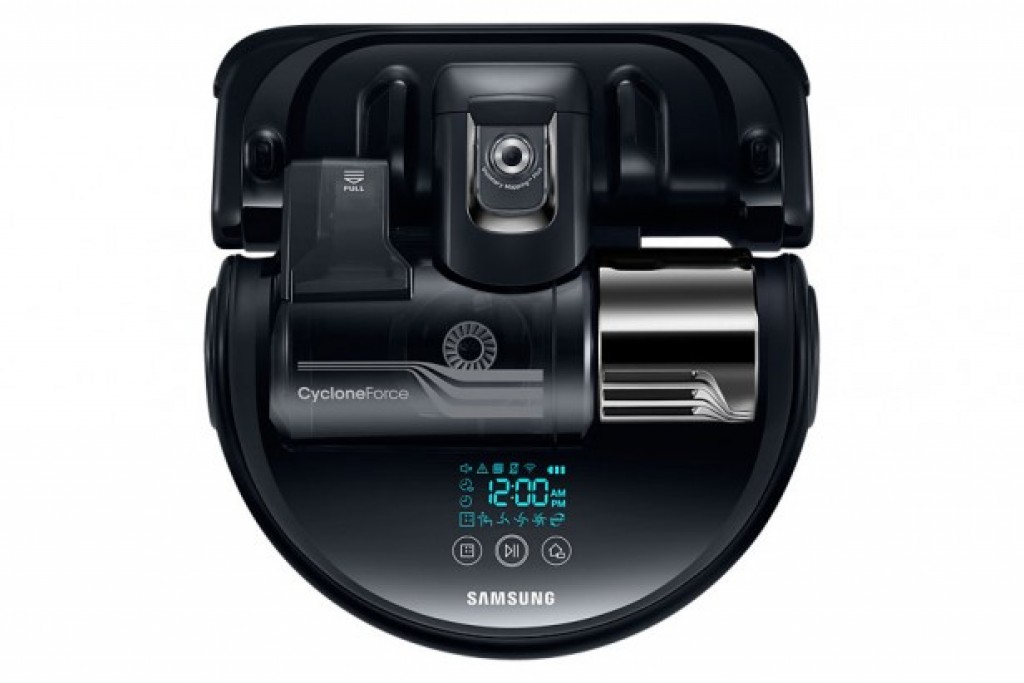
Samsung has opted for a far more powerful motor than previous generations and has fitted it with a three-stage power control. In fully automatic mode it will run around at lower power and ramp up the suction when it detects additional dirt on the floor or in the airflow. This has a huge impact on run-time, particularly if you have pets or kids the place in need of a daily clean.
Claimed run time is stated as 30, 60 and 90 minutes, but unlike cordless cleaners the actual run time doesn’t actually matter. When the VR9300 detects it’s running low on juice, it marks its spot, automatically returns to the charge dock for a top-up and will resume where it left off once it’s charged.
The square front-end is clearly better at addressing square rooms and straight walls than a round-shaped cleaner, such as a iRobot Roomba 880, and the VR sports the biggest robot brush bar on the market. At a whopping 31cm wide, the brush bar features soft and stiff bristles, as well as rubber blades to cover all surface eventualities. Two clips allow the bar to be lifted out for easy cleaning.
Also on the underside of this bot are two front rollers to track floor features, two trolley wheels that allow it to rotate on the spot, and two treaded rubber drive wheels.
Each wheel benefits from a heavily spring-loaded suspension with some 4cm of movement, giving the VR9300 tenacious ability to get over door frames or thick rugs. The wheels also keep the main cleaner body (not the brush) 2cm clear of the surface, so it’s less likely to become tangled up with room junk such as cables. That neatly addresses our two main gripes with the old VR9000.
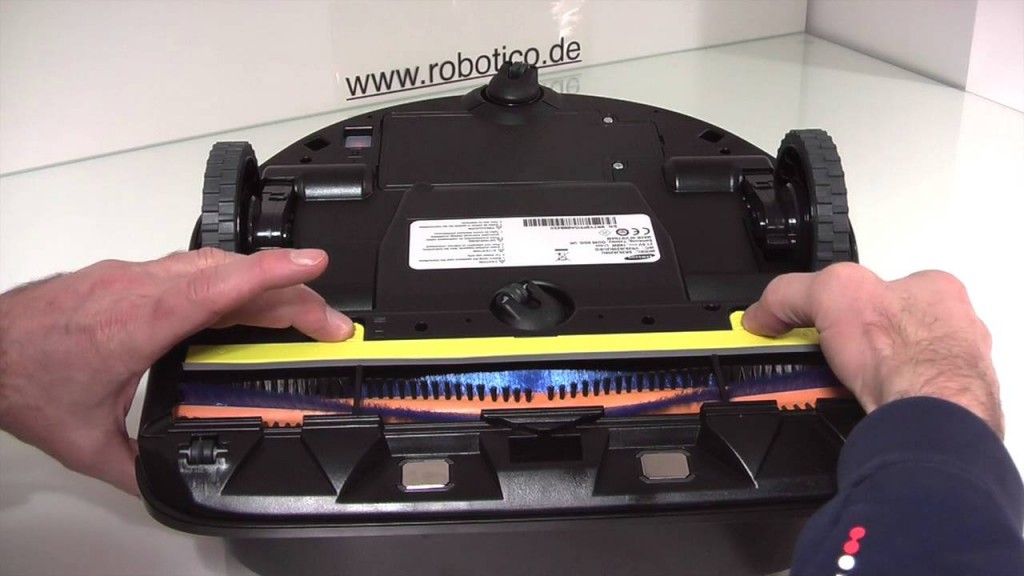
On its sleek top the VR9300 offers a flip-up carry-handle, easily removable 0.7-litre dustbin, three soft keys to control cleaning, and a bright blue display. Towards the front there’s an upward-facing digital camera that maps your ceiling before embarking on the most efficient floor-cleaning route aided by a raft of sensors. These are much improved over the previous model and now detect narrow obstacles such as thin chair legs. That’s another VR9000 gripe sorted.
Also included is a washable filter tucked in the end of the bin chamber, and a spare filter is supplied so there’s no down-time while letting it dry. Other accessories include a rather funky remote control with direction control and an innovative spot-marking laser. Simply aim the laser pointer where you want to clean and the VR9300 duly works its way across to give the area a good going over. The remote also has manual controls for power level and a button that sends the VR9300 obediently back to its dock.
The dock itself is a sleek gloss-black affair with LED indicators, and is designed to sit against a wall. You’ll have to find a space for it, though. When docked, the robot sits a few inches from the wall. Given its already large footprint, ideal placement would be in a corner. I had it under a coffee table. This is where the Dyson has the advantage, as it is narrow enough to be left out in the hallway.
The pack also comes with one of Samsung’s SmartGuard virtual wall generators that can be placed to stop the VR9300 heading into rooms from which it’s banned.
Setting up the VR9300 is somewhat dependent on how deep you want to go with its features. For a quick room clean you can plug it in, charge it up, press Auto and off it will go. If you want to use its scheduled cleaning features, you’ll need to set up the time with a slightly arduous soft key logic. Setting up networking is very much like setting up a networked speaker. You put the VR93000 into Wi-Fi Access Point mode by pressing the clock button on the remote for a few seconds, then connect your smartphone or tablet to the access point.
Diving into the Samsung Smart Home App allows you to connect the robot to your Wi-Fi network by inputting your network password. On first connection the cleaner stayed parked and displayed “UP” – a firmware update in progress. On my snailband internet it took a while before I could start cleaning.
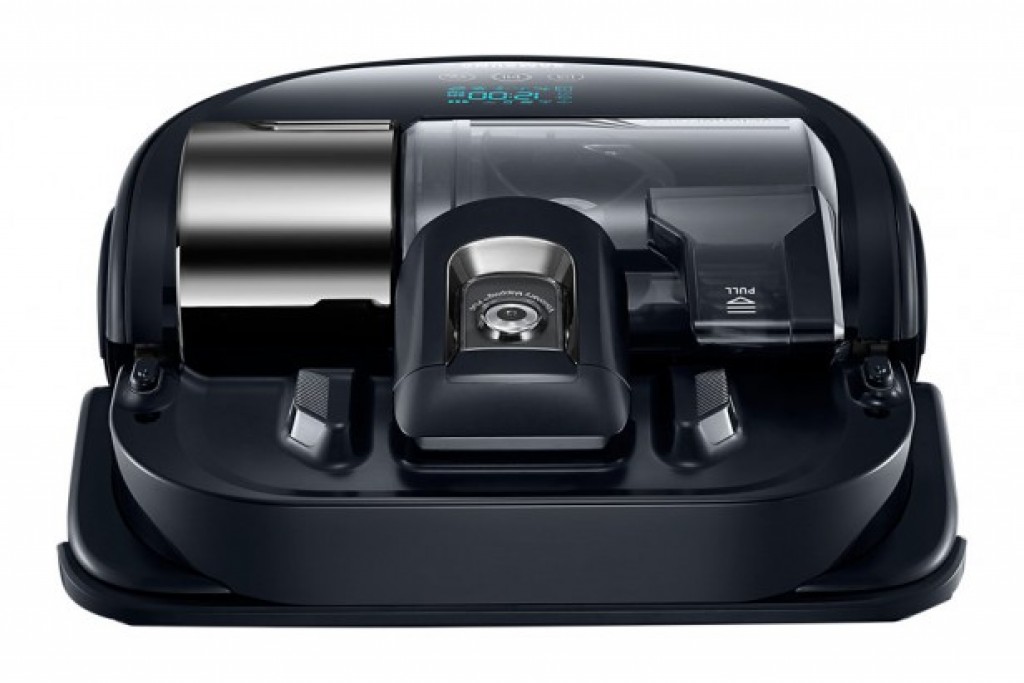
SAMSUNG POWERBOT VR9300 – FEATURES
For quick clean-up you can use either the VR9300’s top-mounted buttons or the remote control to set it on Auto, Spot or Manual cleaning. There are three power settings – Quiet, Normal or Max.
‘Auto’ will map the room and begin cleaning until the battery becomes low. It will then return to the charger for a top-up before resuming a couple of hours later. That will invariably be when you least expect it: in the middle of the night, while you’re gripped by a TV drama or, in our case, when the dog is asleep beside it, resulting in YouTube gold.
‘Spot’ clean mode is designed for localised spills. You physically place the VR9300 in the middle of the spill zone, either manually or driving it there with the remote, and it will clean an area approximately 1.5m x 1.5m in a spiral pattern. The suction power rises when it detects really dirty areas and it runs until its spiral-cleaning pattern completes. It then simply stops; if it’s in the same room as the charge dock then you can simply press the home key on the remote and it will mosey on back to base on its own.
‘Manual’ clean uses the remote control cursor keys to steer the VR9300, not unlike a small remote-control car. It isn’t exactly frantic high-speed action but this cleaner doesn’t hang about – this mode is ideal for steering towards dirty areas or pet fluff.

Pressing the down/back key on the remote emits a laser-pointer target. Point this at the location you want cleaned and the VR9300 tracks over to the area and, shimmying around using variable power until the area is clean. Again, this is ideal for patches of ground-in pet hair, crumb spillages or simply chasing the dog. Vacuuming really has never been so much fun.
The basic modes aren’t really what the VR9300 is all about. Not only is it designed to undertake scheduled cleaning tasks by programmed timing, but its networked interface means you can control its every move from your smart device.
The VR9300’s Select & Go interface is part of Samsung’s classy Smart Home App and is delightfully intuitive to use. The main page offers status and battery level information, as well as direct control over the power level and setup for scheduled programming. There’s a comprehensive history page that shows you when, where, what time and on what power it has cleaned in the past, as well as a day-by-day monitor of how much electricity it has used on its energy monitor page.
Fancier still, the app shows you the room layout as seen by the VR9300, creating a virtual floorplan. This is divided into rooms and even sections in larger rooms, all of which can be named, allowing you to specify which room and even which area of the room is cleaned and when.
SAMSUNG POWERBOT VR9300 – MOVEMENT AND TRACKING
The VR9300 has numerous sensors. In addition to the obvious upward-facing camera, it has a raft of front-facing radar sensors, a window with rear and side sensors, and several cliff/drop sensors on its underside. This is a big step up from the old model, with the VR9300 sailing through our standard robot vac tests where its predecessor had more than a few wobbles.
The cleaner very effectively navigated its way around the room as a whole, detecting even narrow obstacles such as thin chair legs. These it would almost nudge but then stop and move around. It did occasionally then gently nudge the obstacles with its rear-end on subsequent turns, but not with any great force. It nudged the bike in the hallway a few times but barely touched it. Its predecessor upended the bike and scurried off dragging several kilos of cycle with it.
Our small drop test consists of a step just 2.5cm tall that often fails to trigger some robot cleaner’s cliff sensors, causing the robot to head off the edge and become wedged. The VR9300 ran up to the edge, turned and cleaned along it with impunity.
The opposite test is our rug-step test, comprising a 2cm thick rug placed on hard parquet floor. While many cleaners see this as a wall and avoid it completely, the VR9300 simply drove up onto it and carried on cleaning as if it wasn’t there.
Likewise, it passed our diagonal wall test with flying colours by simply turning and running along parallel to it. It also ran over loose cables placed in its path without becoming tangled up – again, an area where the previous model failed. If you’re using a robot cleaner, you should eliminate loose and trailing cables anyway, but the VR9300 is clever enough that it’s not a necessity.
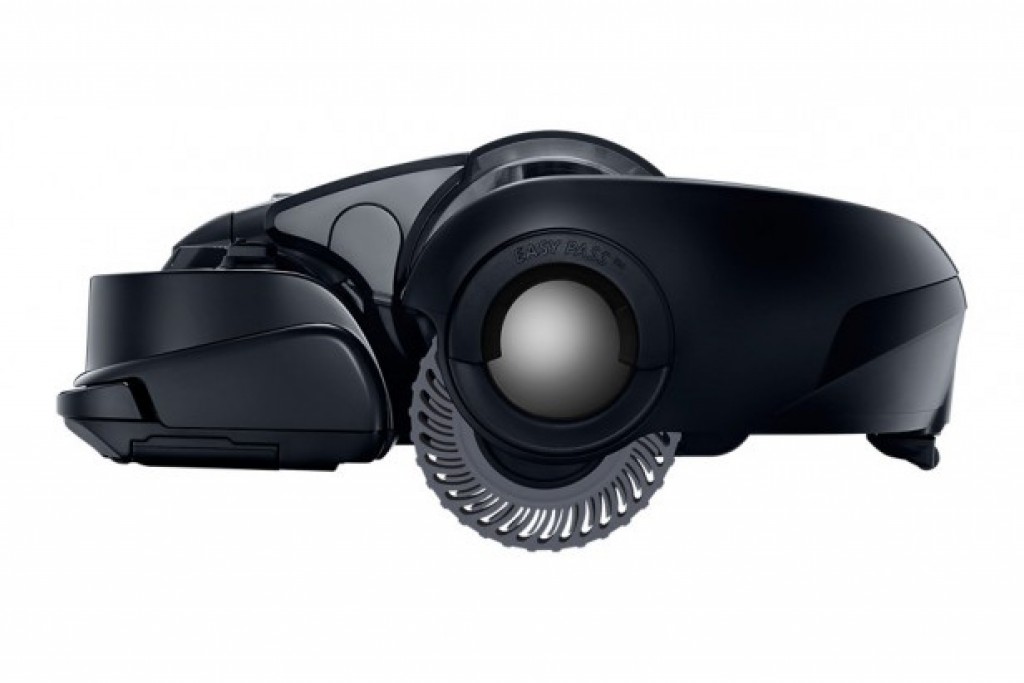
Over the two weeks on test, the VR9300 only had a couple of minor obstacle failures. The first was navigating the metal, domed base of a standard lamp. It’s a really tough test of the navigational abilities of robot cleaners and few have effectually cleaned around it without some misshap. The VR9300 didn’t see it effectively, so it rolled over the edges a couple of times and once ran straight up it, getting stuck.
The second issue was a test trap of a four-legged foot stool placed near a diagonal wall, leaving a gap just big enough for the cleaner to get in but not turn around. Following a few panicked shimmies trapped in the space, the VR9300 switched off and signalled for help.
Both of these issues are designed specifically as robot vac challenges and both can be resolved by repositioning furniture prior to cleaning. What you can’t change is the VR9300’s height, which at 135mm is taller than most robot vacuum’s on the market, and limits its ability to get under some low furniture.
Indeed, the Samsung is actually a few centimetres taller than the Dyson, which is already on the tall side. The VR9300 is also around 15cm wider than the Dyson, so it can’t fit into some of the tighter spaces the Dyson can. As ever with robot vacs, there’s always a compromise somewhere.
Its size might be a problem in some homes, but we can’t fault the Samsung’s navigation, which is one of the best we’ve seen from a robot vac.
SAMSUNG POWERBOT VR9300 – CLEANING
A lot of so-called robot vacuum cleaners are often souped-up floor sweepers with less actual suck than a cheap stick-cleaner. The Dyson 360 Eye was the first to offer serious cleaning power, and the Samsung is closer to the Dyson than the underpowered rivals. The VR9300 delivers proper suction power and exceptional air-flow rate. Its Quiet mode (we measured just 69dB) will be fine for hard floors in need of a light dusting, but it’s the Normal (71dB) and Max (74dB) modes that deliver stand-out results.
Set up for its first run on fully automatic room cleaning, the VR9300 moved out from its charge dock with purpose. It ran straight across our powder-covered test rug, delivering the sort of cleaning results that wouldn’t disgrace a decent upright vacuum cleaner.
It produced a clean line through the middle of the powder, leaving behind well-brushed pile. The combination of well-designed brush bar and great suction worked superbly on a range of debris, including pet hair.
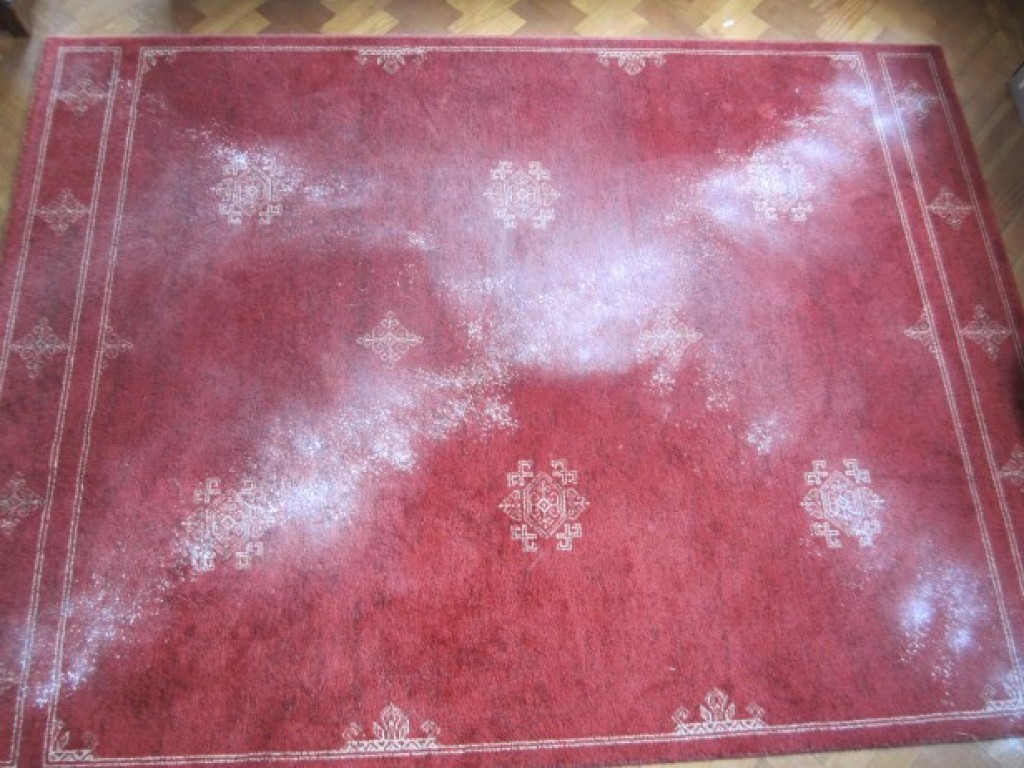
Before

After
In fact, the VR9300’s performance puts it in a league of two alongside the Dyson 360. At the end of the first cleaning session the central rug was left spotless of both powder and our usual pervasive pet hair, save a very small triangle in one corner that was missed entirely. A few hours of charging later, the VR9300 headed back to the room and cleaned that patch as well.
By the end of its second outing the whole of the hard floor area was addressed thanks to the classy navigation. The four test spills on the parquet were efficiently cleaned, with the bulk of the powder picked up and only very fine powder “stain” left behind on the parquet. Unless you’re in the habit of spilling a mix of static charged carpet cleaner powder and baking powder on your hard floors, this probably won’t be an issue.
Edge cleaning on hard floors was suitably impressive, thanks largely to the cleaner’s outstanding suction power dragging in light debris from the side and front. Dust and fur balls were sucked in with ease and the VR9300’s top-mounted exhaust means that they weren’t simply blown around the room. Approaching room edges square-on, it drives right up to the skirting three times to ensure it’s picked up as much dust as possible.

Before
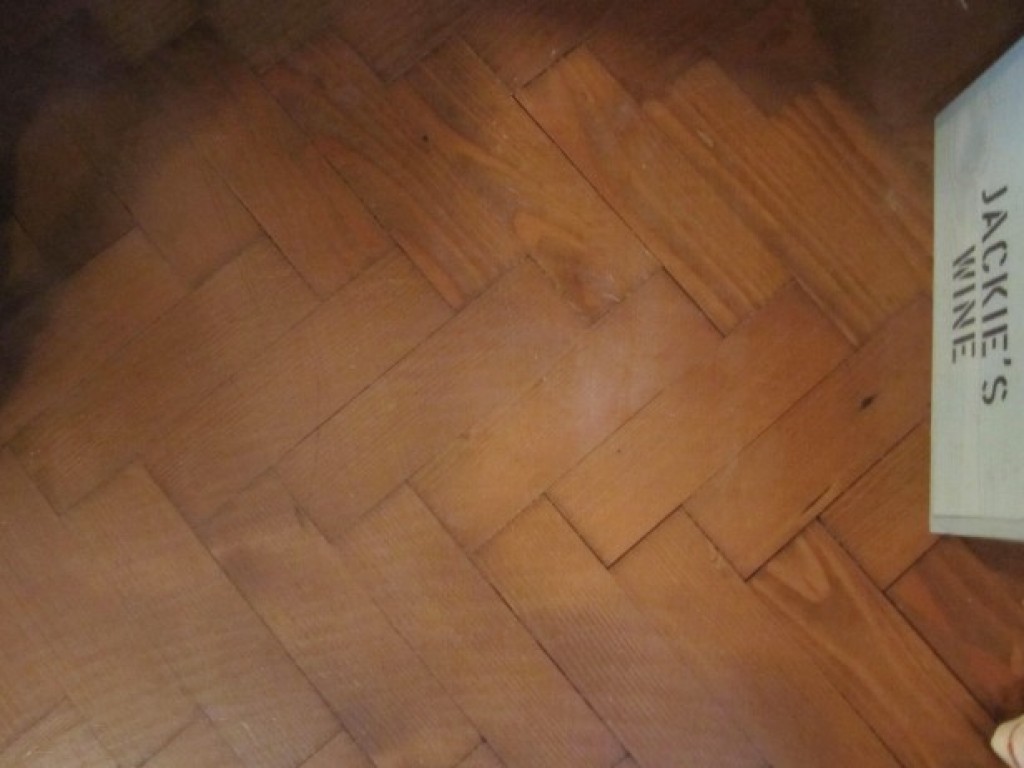
After
Results for edge cleaning weren’t quite so impressive in fully carpeted rooms, since the brush bar is still considerably shorter than the full width of the cleaner. This leaves a centimetre or so of carpet at the very room edge that wasn’t addressed – although that’s still much better than round-shaped robot cleaners that feature brush bars at their centre.
Observing the VR9300 over several repeated room cleans you can clearly see its dust-sensor features in action. If you run it out on a relatively clean floor it charges around with serious pace, only slowing and increasing power when it detects a particularly dirty area. It will easily complete a fairly clean room within its 25-30 minute run-time, even if you set it to the Max power mode.
In dirtier rooms, with pet hair, dust and walked-in dirt, the Powerbot VR9300 proceeds more slowly and with purpose to ensure cleaning. Sure enough, when the battery starts to wane it heads back for a re-charge (around 3 hours) before picking up where it left off. As is the case with cordless vacuums, little and often is the key to a clean home.
This is one of the key differences between it and the Dyson. The Dyson doesn’t feature any dirt detecting sensors, preferring to stick to a systematic approach. That works well, but Samsung’s approach means it will probably cover a larger area for each full charge.
However, the VR9300’s Achilles’ heel is a result of its own success. In our pet-centric household on a farm, we generate an inordinate amount of floor dirt and there’s no arguing that the Samsung Powerbot is very good at cleaning it up. The 0.7-litre bin is super-small for such circumstances, and the limiting factor to fully automated cleaning is having to empty the bin.
Moreover, pet hair seems to fluff-up in the bin rather than be compressed, so the VR9300 would often down tools and demand to be emptied with nowhere close to 0.7 litres of debris in the bin.
The upshot, in our house at least, was that the first clean of the living room resulted in two stops to empty the bin, pretty much defeating the cleaner’s ability to do its job while you’re not there. A large bin or, better still, a system of compressing the debris to a greater degree would elevate this cleaner’s overall functionality and usability for homes with more challenging cleaning requirements.
Yet, one of the advantages of longer-term testing of products is getting to know how they fare over time and in real-world use. Set up to clean the ground floor daily kept overall dirt down and meant the VR9300 needed emptying far less.
We got into the habit of emptying it once per day irrespective of the dust in the bin. In fact, after a few weeks we realised we were still actively using the VR9300 and it hadn’t, unlike every other robot vacuum cleaner before it, gone back in the box. It has proven itself a properly functional and effective vacuum cleaner, even in our challenging environment.
For flats, apartments and homes without the pet and mud-related dirt chaos here, the robot vacuum cleaner has truly come of age.

SHOULD I BUY THE SAMSUNG POWERBOT VR9300?
After the Dyson 360 Eye impressed us so much with its cleaning power, we’re pleased to say the Samsung Powerbot VR9300 gives it some serious competition. It offers superb suction power, a very effective brush bar and more flexibility in where it cleans. We love the laser pointer spot cleaning mode.
On the downside, the Samsung is rather large – taller than the already tall Dyson and considerably wider. Also, like the Dyson, its outstanding cleaning makes the small bin capacity more problematic.
Ultimately, it depends on what sort of home you have. If you have plenty of space, the size of the Samsung won’t be much of an issue, and you can really take advantage of its longer battery life. For small apartments, however, you may prefer the compact dimensions and simplicity of the Dyson.
VERDICT
The VR9300 is one of the most effective, genuinely useful robot vacuum cleaners we’ve tested to date. If you have the space, it’s well worth considering.

Source: trustedreviews.com









































